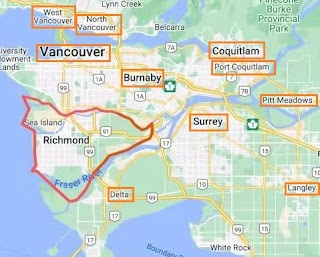Richmond Real Estate Market


Home Price Index (HPI) is designed to gauge changes in home
prices. It is the most advanced and accurate tool to monitor home price LEVELS
and TRENDS and excludes the extreme high-end and low-end properties. HPI reflects
contributions made by various quantitative and qualitative housing features
toward the home price, including:
Tracking home price trends allow us to see the bigger
picture and understand how these trends affect the market value. HPI is more reliable
and consistent way than average price and median price.
Average price are calculated
by adding the dollar value of all sales in an area and dividing this number by
the number of homes sold.
Median prices are calculated
by listing all sales in an area from the lowest price to the highest price and
choosing the midpoint.
The figure from The Canadian Real Estate Association below shows Benchmark price, average price and median price in an area. Benchmark price is determined by HPI. We can tell Benchmark price represents a trend more clearly. Average price and median price can fluctuate dramatically, making the housing market appear unstable.
Comments
Post a Comment